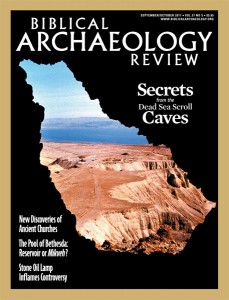Archaeological Views: An Archaeological Cold Case Solved

In a recent issue of BAR (January/February 2011), the acronym DSI was used to refer to a “Dig Site Investigation,” comparing the tools and methods of modern archaeology with the work of forensic detectives from the popular TV show CSI (an acronym for “Crime Scene Investigation”). The analogy can certainly be applied to ongoing field excavations, but it can also be applied to the work of archaeologists like me who are responsible for publishing the languishing and often-neglected records of excavations conducted many decades ago.
These excavations hold unique archaeological insights and they cannot be replaced. Earlier generations of archaeologists often chose the most historically significant and centrally located sites. Because what has been dug can never be excavated again, it is crucially important that current and future archaeologists have access to the records—including notes, maps, plans and photographs—that were generated from the excavation of these sites, particularly now that many of these “old” sites are being re-excavated with modern tools and techniques. Working without the data from earlier, unpublished excavations is akin to putting together a jigsaw puzzle knowing that the crucial pieces are misplaced somewhere in the attic. Making sure the work of earlier archaeologists is published, therefore, is far more than a simple exercise in archaeological ethics and good housekeeping.
Already a library member? Log in here.
Institution user? Log in with your IP address.

